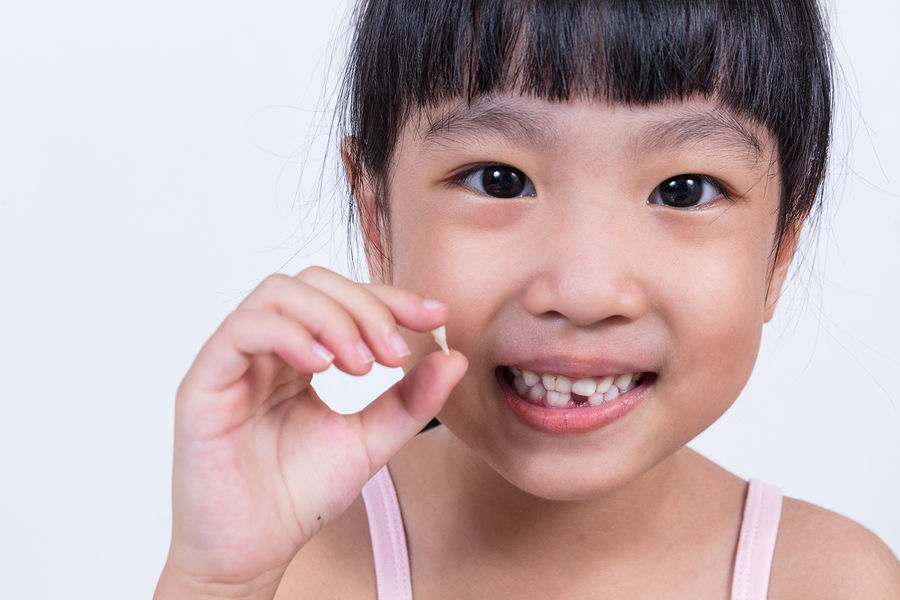What You Should Know About The Eruption and Loss of Your Child’s Teeth
- Dr. Duke Bui
- May 16, 2018
- 3 min read

Losing teeth is a fact of life, but exactly how this process happens may still be a mystery for you.
Why do humans have two sets of teeth? Are your child’s teeth coming in on schedule? What can you do to make sure your child develops a healthy smile?
The Important Role of Teeth
Teeth come in different sizes and shapes and show up in unique positions in the mouth. This allows them to interlock properly when you bite and fulfill their roles in helping you chew.
For example, front teeth are designed to cut into foods like crispy apples. The canines and bicuspids help you tear off pieces from foods like sandwiches or pizza slices. Molars, located in the back of your mouth, grind up food and crush hard items like nuts.
Each tooth plays an important role in helping kids and adults alike to eat and speak with ease. Teeth need to be properly lined up for a comfortable bite.
Why Kids Lose Teeth
Kids’ teeth are small to fit in their tiny jaws. But as their mouths and heads grow, larger teeth must come in to maintain proper alignment and function.
Baby teeth are important placeholders for those adult teeth, guiding them into proper position as they emerge. These primary, or deciduous, teeth will stay with your child for the first several years of their life.
Adult teeth start out as small buds growing in the jawbone behind the baby teeth. As they develop, they become harder and stronger than the primary teeth. The adult ones start pushing on baby tooth roots and cause them to dissolve over time.
By the time an adult tooth crown starts peeking through the gums, the baby tooth will be nothing but a hollow shell hanging onto the gums by a few threads.
With a little wiggling, these baby teeth pop out quite painlessly.
You can generally expect your child’s teeth to arrive in pairs as mirror-image counterparts on either side of the mouth.
Eruption Times for Baby Teeth
The times when baby teeth show up can vary, but most babies start cutting their first teeth around 6 months of age. The lower front teeth are typically the first to arrive.
Soon after, the upper front teeth come in. After that, the remaining 16 baby teeth come in gradually in pairs over the next couple of years. Your toddler should have all 20 baby teeth in place by the time they are three years old. These teeth will stay with your child until he or she is about 6 or 7 years old. At this point, the permanent teeth should start showing up.
When Do the Adult Teeth Arrive?
Adult teeth follow a similar pattern as the arrival of baby teeth. This means that the bottom front baby teeth are usually the first to get loose.
There is no set time for your child to start the process of losing baby teeth. Every child is biologically unique. On average, children start losing teeth by the age of 6. Some kids, girls in particular, lose teeth even earlier. Boys tend to lose teeth a little later.
Don’t be alarmed if your child reaches age 7 and hasn’t yet lost any teeth. But you should be concerned if he or she is a bit older and hasn’t gotten any loose teeth, yet. On the other hand, premature loss of baby teeth can lead to tooth alignment issues. Bring your child to the dentist if they’ve lost a tooth out of order because of injury or decay.
Smile Development in Later Years
Adult tooth eruption continues into the early teens. At around 12 years of age, your child's second set of adult molars will come into place. Smile development doesn't end there for teens who get their wisdom teeth. These teeth tend to arrive around 17-25 years of age.
Not everyone gets wisdom teeth. Some people get only a couple wisdom teeth, and some never get them at all. Others are unfortunate enough to get impacted or crooked third molars that need to be extracted.
How to Ensure Healthy Smile Development for Your Child
Great oral hygiene is crucial at each stage of your child’s smile development. By teaching your child to brush and floss, you can keep both baby and adult teeth healthy.
Remember that all kids get their baby and adult teeth at differing times. If you’re concerned, ask a local Tacoma family dentist for advice.
Regular dental checkups and x-rays will help you track tooth development and make sure that there are no problems.
Contact Duke Bui, DDS, PS to schedule your child’s next smile development consultation.






























Comments